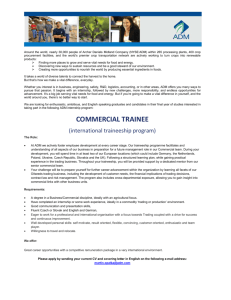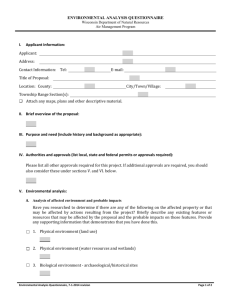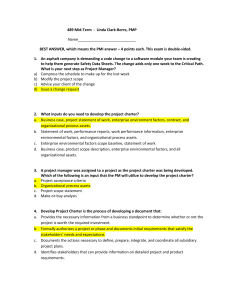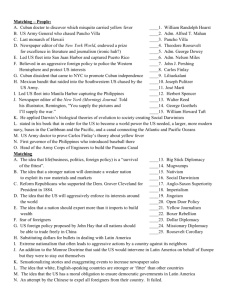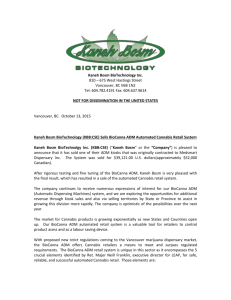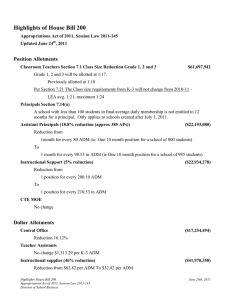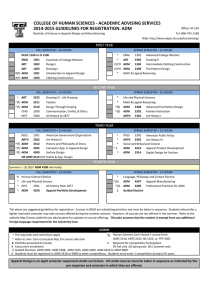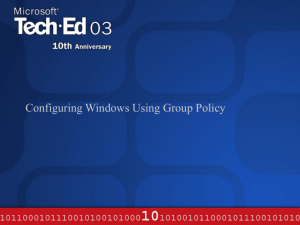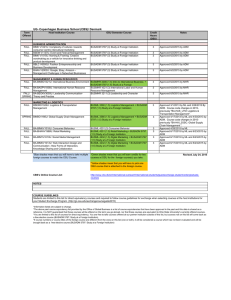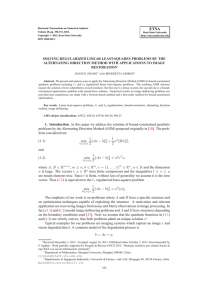Six Classification Issues and Concerns Power Point
advertisement
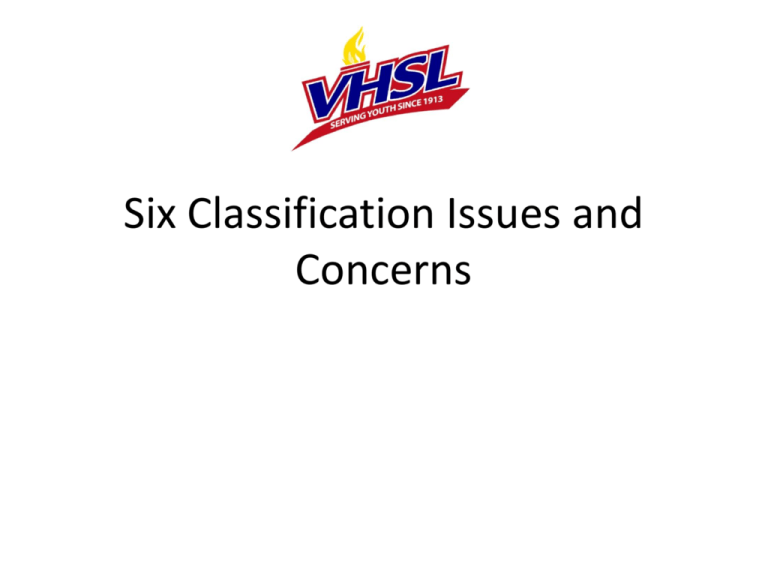
Six Classification Issues and Concerns Four Year Cycle Proposal Six Classification: The Future Four Year Cycle Proposal Proposed criteria for mid-cycle adjustments Any classification assignment may be appealed to the VHSL Alignment Committee. Four Year Cycle Proposal Proposed criteria for mid-cycle adjustments At the mid point of a four year cycle a school will remain in its current classification if the school is no more than 5% above the highest school’s previous ADM within the classification in which they wish to remain. March 31, 2012 ADM Schools with Highest ADM 5A – Freedom (PW) – 4A – Nansemond River – 3A – Warhill – 2A – R E Lee (St) – 1854 1468 1112 728 +5% 1946 1541 1167 764 March 31, 2014 ADM Five 5A schools moved to 6A Albemarle at 1835 is the largest 5A school Using the 5% buffer - 1946 Mt. Vernon – 1952 – Only school that moves to 6A Freedom(PW)-1901; Manchester-1870; Clover Hill1847; Kellam 1842 – Would remain 5A for the last two years of the cycle absent an appeal. March 31, 2014 ADM Three 4A schools moved to 5A Woodgrove at 1453 is the largest 4A school Using the 5% buffer – 1542 Glen Allen – 1617 – Only school that moves to 5A. Nansemond River-1507; J R Tucker-1491 - Would remain 4A for the last two years of the cycle absent an appeal. March 31, 2014 ADM Six 3A schools moved to 4A Blacksburg at 1121 is the largest 3A school Using the 5% buffer – 1167 John Champe-1291; Loudoun Valley-1225; Kettle Run1179; Huguenot-1171 – Move to 4A. William Byrd-1147; Lafayette-1132 – Would remain 3A for the last two years of the cycle absent an appeal. March 31, 2014 ADM No 2A schools moving to 3A would be affected by this proposal. Four Year Cycle Proposal Exception Absent an appeal this new criteria WILL NOT apply to schools in Class 1 as they are operating under a “hard number” ceiling (475) Questions? Six Classification The Future There have been many concerns conveyed relative to six classification alignment. Member schools and outside groups have offered these concerns. It is paramount that VHSL member schools control their organizations destiny. These are concepts/ideas that MAY answer some of the global and local concerns regarding the future of the VHSL in a six classification configuration. Option One Remain as is with district/conference/region and state. Allowing the existing entities to work out sectionalizing, conference play requirement, governance, travel and money issues. Pluses – Some have worked through the issues; two years experience with the product; we now know what works and what does not. Minuses – Geography; travel; missed time from school; some say they are “hemorrhaging money”. Can these be fixed? Option Two Legislate no conference scheduling unless it can be accomplished outside the double round robin district scheduling. Pluses – Bring emphasis back to the district schedule (which had always been the intention of the alignment committee); makes the conference grouping as it was initially intended – the first level of playoffs, not a scheduling mechanism. Minuses – Have to figure a way to seed teams; may never see a team in a conference until the playoffs; there will be potential exceptions to the double round robin based on contest limits (FBXC-Golf-Wrestling-Soccer-Tennis- Track – Field Hockey) and district size (9, 10 and 11 school districts). Option Three Legislate Four regions per class (12-14 schools per region) and remove conferences all together. Play a district schedule and then use the smaller regions as the playoff grouping. Pluses – Eliminates a component (conferences) that some believe is not working; gives some old system (three classification) feel to the new system (six classification); football region finals now can occur within the region schedule; two reps per region – eight team state event most sports. Minuses – All-in region creates travel issues greater than with the conference component; some regions have worked out the issues and actually have a well functioning situation; this is change on top of change. Option Four Allow classifications to determine their regional make-up, playoff formatting etc. Class 1A & 2A like the way the current system works. They have worked out their issues and believe the district/conference/region/state system works for them. Class 3A, 4A, 5A & 6A want to eliminate conferences and organize their classification in four smaller regions. Pluses – Gives each classification the opportunity to build upon what they feel is best for them; allows some of the old three-class system to blend with the new six-class system; offers an opportunity for classifications to decide how they would like to be divided. Minuses – Calendar differences with regard to classifications wishing to have eight teams in playoffs (state Q-Finals) vs. those that do not; representation on the Executive Committee would have to be addressed. OPTION 5 Two Classes not six – with option to play up Draw line at 1150/1200 or “half”. Four year cycle and back to “districts” with schools in your class. Class decides on # of championships and bracketing. OPTION 5 Pluses - Recognizes that “big” schools have different geography and financial concerns; very little shifting is required each R&R cycle; More schools in the “class” would allow “districts” to look more like old AAA districts and division play. OPTION 5-Minuses May end up with very different “systems” between “big” and “small” classes. Potential for fewer championships in some activities based on Class decisions. ”Districts” would have to include ALL schools even the geographic outliers in regular season play. Potentially need to allow “small” to play up in only certain activities (FH, Lacrosse, etc.). Other important points These options are not for immediate implementation. They need to be thoroughly vetted. It may take a cycle to implement. Potential next steps Discussion at VIAAA Conference. Survey of interest of all options (not just those in this presentation) – conducted in April. May report to Executive Committee on survey results. Potential next steps Alignment Committee discussion. October meeting discussion. Other appropriately representative meetings. Questions and Discussion
